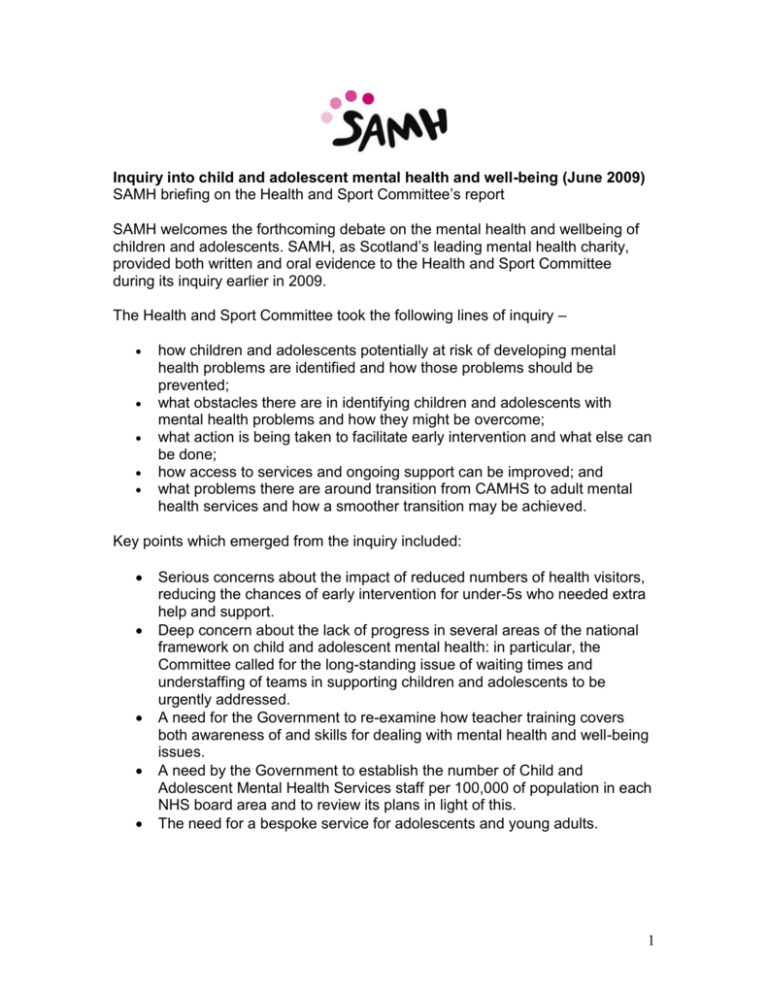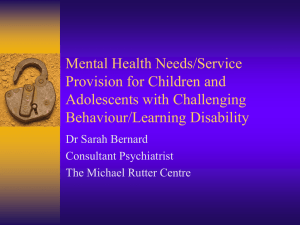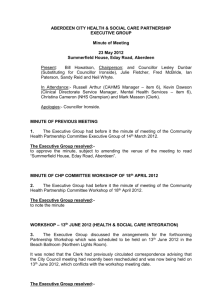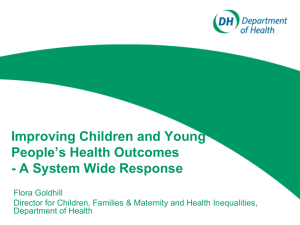click here - Scottish Association for Mental Health
advertisement

Inquiry into child and adolescent mental health and well-being (June 2009) SAMH briefing on the Health and Sport Committee’s report SAMH welcomes the forthcoming debate on the mental health and wellbeing of children and adolescents. SAMH, as Scotland’s leading mental health charity, provided both written and oral evidence to the Health and Sport Committee during its inquiry earlier in 2009. The Health and Sport Committee took the following lines of inquiry – how children and adolescents potentially at risk of developing mental health problems are identified and how those problems should be prevented; what obstacles there are in identifying children and adolescents with mental health problems and how they might be overcome; what action is being taken to facilitate early intervention and what else can be done; how access to services and ongoing support can be improved; and what problems there are around transition from CAMHS to adult mental health services and how a smoother transition may be achieved. Key points which emerged from the inquiry included: Serious concerns about the impact of reduced numbers of health visitors, reducing the chances of early intervention for under-5s who needed extra help and support. Deep concern about the lack of progress in several areas of the national framework on child and adolescent mental health: in particular, the Committee called for the long-standing issue of waiting times and understaffing of teams in supporting children and adolescents to be urgently addressed. A need for the Government to re-examine how teacher training covers both awareness of and skills for dealing with mental health and well-being issues. A need by the Government to establish the number of Child and Adolescent Mental Health Services staff per 100,000 of population in each NHS board area and to review its plans in light of this. The need for a bespoke service for adolescents and young adults. 1 SAMH hopes that you will consider raising the following issues in the debate. SAMH welcomes the Scottish Government’s commitment, through the forthcoming HEAT target, that by March 2013 no one will wait longer than 26 weeks from referral to treatment for specialist CAMHS services. However, Audit Scotland’s Overview of Mental Health Services (May 2009) demonstrated how patchy CAMHS provision is across Scotland. What work and investment is taking place between 2010 and 2013 to ensure that health boards across Scotland will be able to meet this new target? How is the Government going to ensure that the new HEAT target is met? Recent statistics show that the CAMHS workforce is currently 14.8 wte clinical staff per 100,000 population. Government policy currently states that there should be about 20 wte CAMHS staff per 100,000 population. The Health and Sport Committee found that the level in NHS Lothian is arrestingly low: eight per 100,000. NHS Dumfries and Galloway reported a figure of around 13 per 100,000; NHS Greater Glasgow and Clyde acknowledged that the level of staff in its area was some way off the target; Aberdeenshire Council stated that, in its area, there are 62 per cent fewer CAMHS staff than recommended for the size of population, and the representative from North Lanarkshire Council described the size of the establishment as a “significant concern” and gave a figure for the NHS Lanarkshire area of 4.5 members of staff per 100,000. What steps are being taken to improve workforce capacity? How is the Government working with the Royal Colleges and the NHS to improve specialist CAMHS provision? At present some young people are placed in adult wards due to a lack of age appropriate services. Progress has been made against the Delivering for Mental Health commitment to halve the number of admissions of children and adolescents to adult hospital beds by 2009. However, in 2008-09 the Mental Welfare Commission reported that there were 155 admissions of under-18s to adult mental health wards: an increase on the previous year. There has been an increase in investment in child and adolescent mental health services this year - for example, there is a new purpose-built unit at Stobhill in Glasgow - and we welcome this. But it is crucial that all health boards meet their duty under the Mental Health Act to provide age-appropriate services. A child or young person in an adult ward is less likely to see a specialist psychiatrist or take part in social activities, and may well have their education disrupted. What action will be taken to reverse the increase in inappropriate admissions? 2 Extra resources should also be made available to eradicate long delays in delivering mental health services for children’s panel cases: how does the Scottish Government intend to do this? It is vital that mental health features on the agendas of everyone whose work impacts on children – including teachers, social workers, criminal justice teams, nurses, directors of local authority services, classroom assistants etc. Can the Scottish Government undertake to share good practice between these groups and ensure that they receive appropriate mental health training? In particular, given the health and wellbeing outcomes in Curriculum for Excellence, what mental health awareness training will teachers receive? 3











